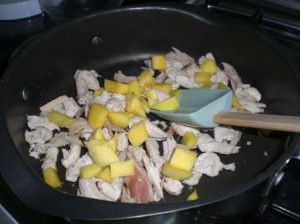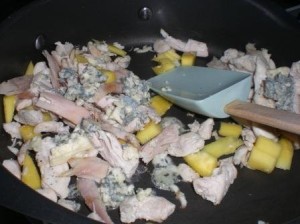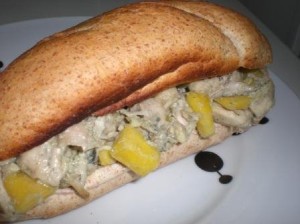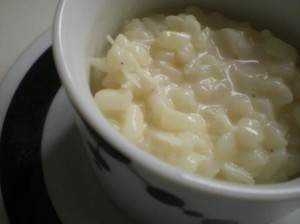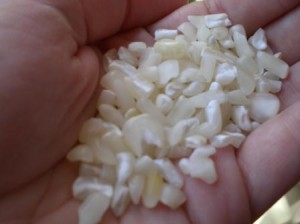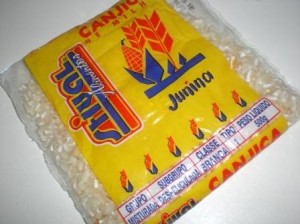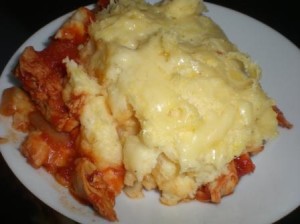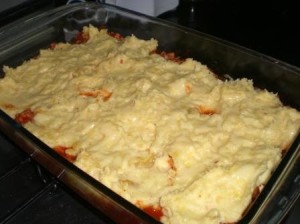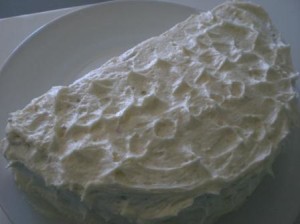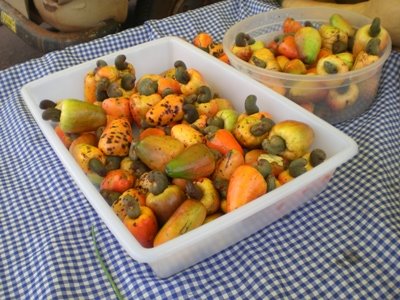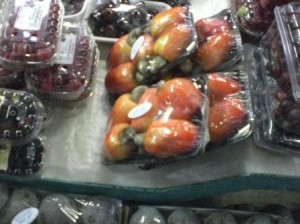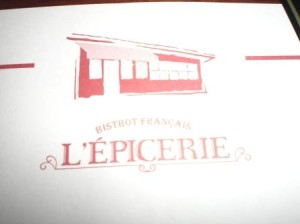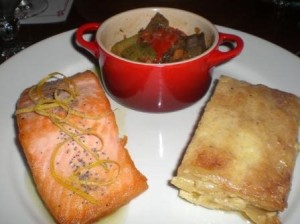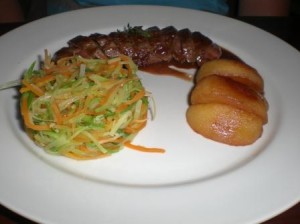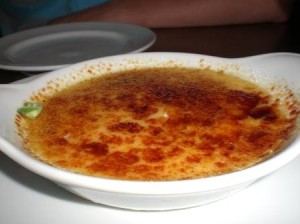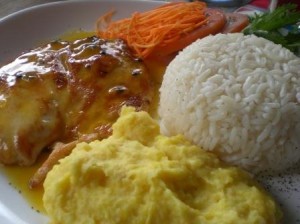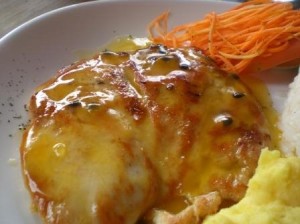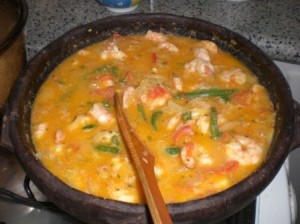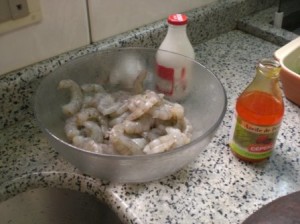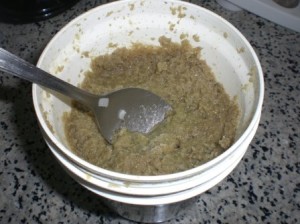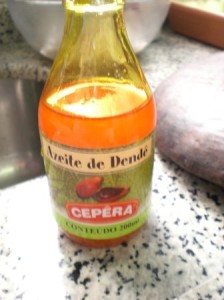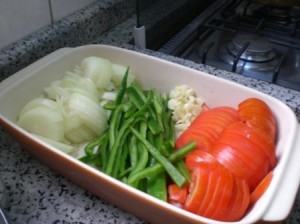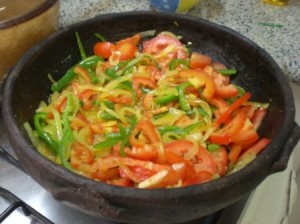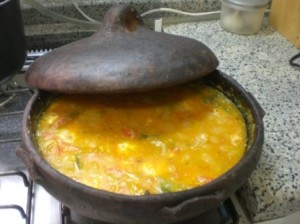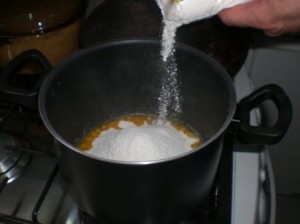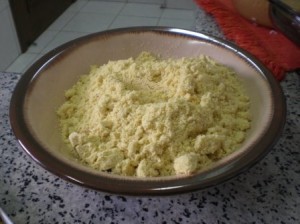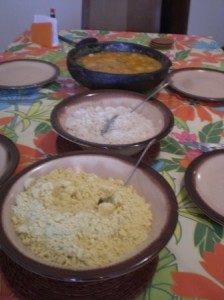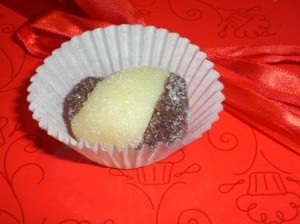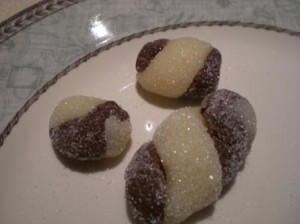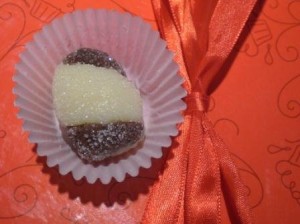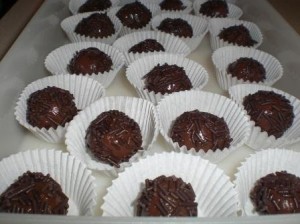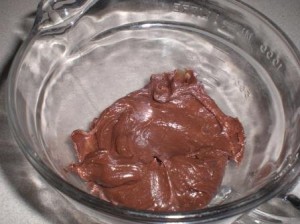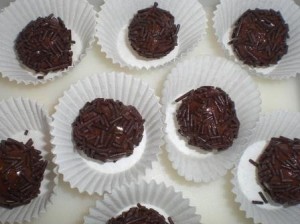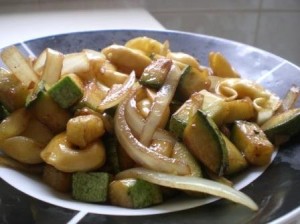
I haven’t been a fan of balsamic vinegar for very long. I used to find that its flavor was too sour, too intense. As time has gone on, I am realizing that it was more the quality I was buying that was causing the problem rather than the actual vinegar itself.
I find that I almost crave it now. I use it on my salads with olive oil all the time and my most recent discovery – balsamic vinegar with pasta.
Let me back up a little bit.
There is a type of dining here in Brazil called rodizio (hoe-dee-zee-oh). If you’ve been to a Brazilian steakhouse you somewhat get the idea, but the style extends way beyond this. Basically, you sit down to your meal and servers bring food around to you and you select as much as you want.
At a steakhouse the food of choice is meat, however, you can eat rodizio pizza, seafood, sushi and pasta in Brazil. There is a place in town that serves rodizio pasta here. I had heard that the chef was a very experienced gentleman who has lived in many cities in the world working for a Brazilian airline and their associated hotels. Lucky for us he then move to Maringa and opened his pasta rodizio restaurant.
Let me first explain that gourmet dining or anything remotely close is a rarity here. There are few nice restaurants in town, but most of them serve meat after meat after meat. There isn’t much variation or what I would call culinary skill involved. I’m not saying it doesn’t take skill to make good meat, but that is a cultural thing here. Almost all men know how to make it well. However, culinary art remains at only a couple restaurants in town.
Before I go on I must also fit in a quick aside. A few weekends ago in my links I mentioned that we eat out here much more than we did in the US because the prices are so incredibly reasonable. This meal is a perfect example. This buffet of excellent pastas served to you in a dimly lit, date-night atmosphere came in at R$15 per person. That’s U$ 6.58 a person at the current exchange rate.
Here is a bit of a photo tour of some of the dishes before I explain my balsamic dish.
First there was a salad of greens topped with a pickled eggplant and, of course, rice. I have yet to be to a restaurant here focusing on any type of cuisine that did not serve rice.
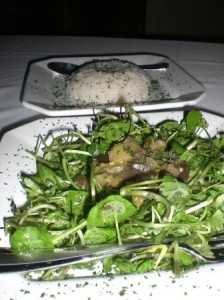
A sweet coconut flan-type cup sitting in a spoonful of an herb and pepper sauce. A very interesting contrast of flavors.
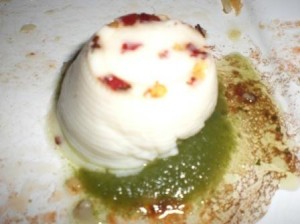
Pasta with a sauté of chopped pears and cinnamon.
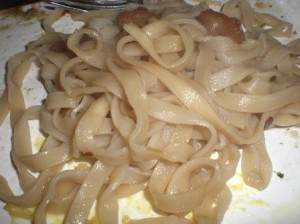
The unique award went to our dessert – Chocolate Gnocchi. It was traditional homemade potato gnocchi served in a hot chocolate sauce with hot pepper. The sweet flavor with a very subtle heat in the back of the throat was perfect. I would love to try and recreate this.
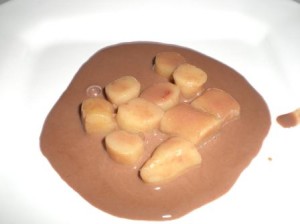
There were many other things like lasagna scented with cinnamon, spaghetti with garlic and oil, and sweet potato dish with a honey mustard topping and chicken, but I will stop there.
About half way through the meal the waiter brought out this dish. I could tell right away from the smell that it contained balsamic vinegar so I gladly accepted.
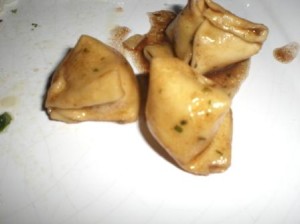
It was a tortellini-like pasta fill with a strong cheese in a balsamic vinegar. Seems too simple to be exciting, but the contrast of the flavor of the cheese with the tartness of the vinegar was excellent.
I was in the kitchen the other deciding on a lunch. I had zucchini that needed to be used and then I noticed a small bowl of left over cheese tortellini from a previous meal. They sell a variety of fresh pastas in the supermarket it here and it’s an easy go-to dinner on the nights I don’t feel like putting forth much effort. So I took my leftovers and set out to recreate the dish similar to the one from the restaurant.
I was thrilled with the results and I can’t wait to make it again! I went heavy on the veggies so I would need less pasta. It is delicious, but also a bit heavy and high in calorie.
You can add the balsamic vinegar at any point during the cooking process. The heat will cook out the acidity making it sweeter. If you don’t like a strong flavor add it early. I like to add it after the dish is cooked because of the tartness and this most closely resembles the original dish.
Balsamic Vegetable Tortellini
Makes 1 serving
Olive oil
Small zucchini, chopped
¼ onion, sliced
1 clove garlic, chopped
½ to ¾ cup fresh cheese tortellini
2 Tbsp balsamic vinegar
Put just a bit of oil in your skillet and sauté veggies until they reach your desired consistency. I like mine still a bit crunchy. Add pasta to heat through. Toss with vinegar and serve.
